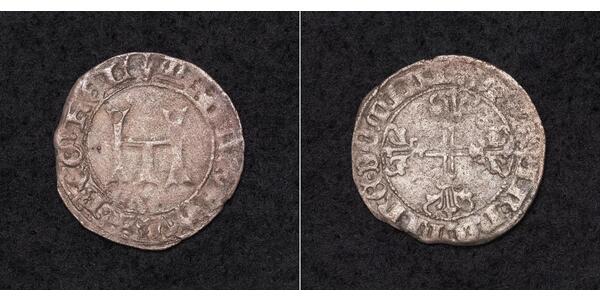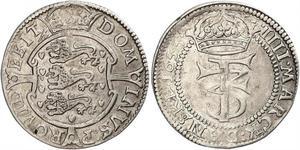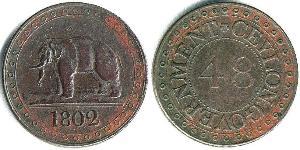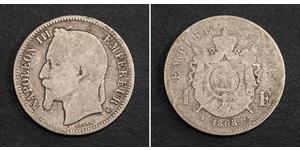(продана за $31.0)
1482-1487, County of Holland, Philip "the Handsome". Silver ½ Groot Coin. Rare!
Reference: Vanhoudt.75.
Denomination: 1/2 Groot
Mint Period: 1482-1487 AD
Condition: Lightly pitted by corrosion, otherwise a nice VF!
Diameter: 19mm
Material: Silver
Weight: 0.9gm
Obverse: Large stylized "M" letter. Legend around, split by privy mark (lilly) at 12 o'clock.
Legend: (lis) MO ARDVS AVST BG CO hOL
Reverse: Cross fleury within inner circle.
Legend: (lis) IN NOMINE DOMINI AMEN
The County of Holland was a state of the Holy Roman Empire and from 1433 part of the Burgundian Netherlands, from 1482 part of the Habsburg Netherlands and from 1581 onward the leading province of the Dutch Republic, of which it remained a part until the Batavian Revolution in 1795. The territory of the County of Holland corresponds roughly with the current provinces of North Holland and South Holland in the Netherlands. The County of Holland was the first Holy Roman county in the area to reach the level of economic, cultural, military, and technological development it did, having had time to undergo this development before the area became classed as a county.
Philip the Handsome (22 June/July 1478 – 25 September 1506), also called the Fair, was ruler of the Burgundian Netherlands and titular Duke of Burgundy from 1482 to 1506, as well as the first Habsburg King of Castile (as Philip I) for a brief time in 1506.
The son of Maximilian of Austria (later Holy Roman Emperor as Maximilian I) and Mary of Burgundy, Philip was not yet four years old when his mother died as a result of a riding accident, and upon her death, he inherited the Burgundian Netherlands. Despite his young age, Philip quickly proved himself an effective ruler beloved by his people in the Low Countries, pursuing policies that favored peace and economic development, while maintaining a steady course of the government building.
In 1496, Philip's father arranged for him to marry Joanna, the second daughter of Queen Isabella I of Castile and King Ferdinand II of Aragon.[1] Around the same time, Philip's sister, Margaret, was given in marriage to Joanna's brother John, Prince of Asturias. After the deaths of her brother John, sister Isabella, and nephew Miguel, Joanna became heiress presumptive to the thrones of Castile and Aragon. Most of Philip's time in Spain was spent consolidating his power, often leading to conflicts with his wife and her father. Joanna became queen of Castile when her mother died in 1504. Philip was proclaimed king in 1506, but died a few months later, leaving his wife distraught with grief. Joanna's father, Ferdinand II of Aragon, and her own son, Charles V, Holy Roman Emperor, were quick to seize power, confining the queen for the rest of her life on account of her alleged insanity.
Philip was the first Habsburg monarch in Spain, and every Spanish monarch since his son Charles V has been one of his descendants. Philip died before his father, and therefore never inherited his father's territories or became Holy Roman Emperor. However, his son Charles eventually united the Habsburg, Burgundian, Castilian, and Aragonese inheritances. By inheriting the Burgundian Netherlands and acquiring much of Spain and its possessions in the New World by marriage to Joanna, Philip was instrumental in vastly enhancing the territories of the Habsburgs, and his progeny would rule over European territories for the next five centuries.

|
Добавил:
anonymous 2024-08-15 |
1 Франк Вторая французская империя (1852-1870) Серебро Напол ...
в группе 13 монет / 13 цен
⇑















-300-150-gCMKbzbi1g4AAAFR2alau0xp.jpg)






